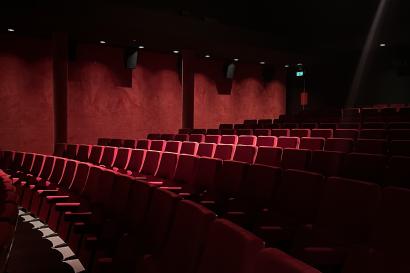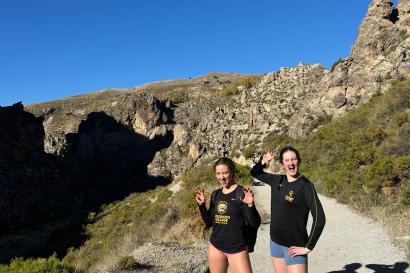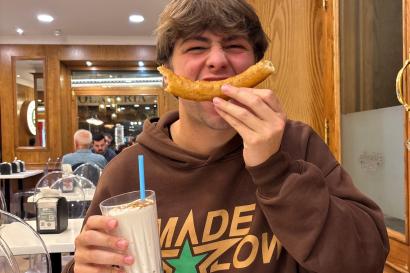In October, our program took a trip to Sevilla, Spain. We visited the Alcazár — a UNESCO World Heritage Site — and the Cathedral of Sevilla, which is said to have the body of Christopher Columbus.
Even though I did not know much about the history of Sevilla, these visits enabled me to think about the complexity and importance of history in this part of the world. The Reconquista of southern Spain served as a springboard for events that would ultimately change the history of the world, and the buildings we toured were the physical remnants of those times.
With each visit, our groups discussed the mix of cultures and influence that went into each structure. For example, the Alcazar appears as if it was built by Muslim powers with its open spaces, intricately tiled walls, rounded domes and courtyards. However, it was built by Catholic powers during the Reconquista who took over Sevilla.
The Cathedral of Sevilla is across the street and is a massive structure — one of the world’s largest churches. The moment that struck me the most was seeing where Christopher Columbus’s body is said to be. His supposed-coffin is hoisted on the broad shoulders of four metal soldiers that are facing the ocean. In the Americas, Columbus is a much-debated and controversial figure. A more recent perspective on his life, popularized by Howard Zinn in A People’s History of the United States, posits Columbus as a genocidal maniac and enslaver — the root of an extremely dark time in human history. (The opposing perspective views him as an explorer, discoverer of the “New World”).
The spatial arrangement of the Alcazar and the Cathedral had the effect of showing a vast continuum of human history on a tiny street corner. To the left, looking at the Alcazar, I could see the remaining influence of Muslim art and architecture on Catholic powers that re-conquered Spain at the end of the 15th century. At the Cathedral I could visualize the power and wealth that Catholic Church wielded after it had successfully retaken Sevilla, such that it could fund explorations to new places.
Many historians agree that the Reconquista of Sevilla was important for what happened next — the expansion of Spain into the Americas, one of the most consequential events in human history that we continue to grapple with today. It’s the reason why a Pope can be from South America and why Spanish is one of the most widely spoken languages in the world. If things had been differently in Sevilla, would the world have turned out differently?

Jake Leffew
<p>I'm a junior history major at Yale University. I enjoy traveling, writing, and spending time with my friends.</p>









